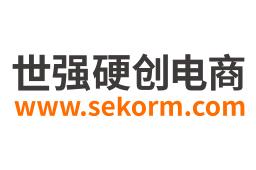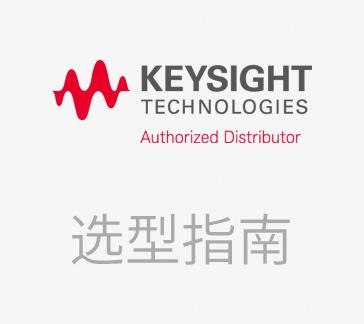How Tunable Lasers Are Enabling High-Speed Communications




Do you know that all the text and images you are seeing right now were, at some point, transmitted as light signals over optic fibers? Fiber optic communication networks are the heart of all the communication networks in data centers and inter-continental undersea cables that enable you to read this article, receive calls and emails on your smartphone, and watch your favorite videos.
Lasers are essential to the operations and testing of such networks. As the world's data volume grows, pushing more data over existing fibers becomes imperative. This is where tunable lasers can help improve network capacity and performance.
In this article, find out what are tunable lasers, where they're used, and how they operate.
What are tunable lasers?
Lasers are monochromatic, meaning that they emit light at a particular wavelength. For regular lasers, this wavelength is fixed.
In contrast, a tunable laser is an optical source whose emission wavelength can be selected from a wide range and dynamically changed to meet the needs of different applications.
For example, the KEYSIGHT N7776C tunable laser source can emit at any wavelength in its tuning range. That is, for example, the 1,240-1,380 nanometer (nm) O-band, the 1,340-1,495 nm E-band, or the 1,450-1,650 nm bands covering the C-, L- and U-bands.

At each wavelength in the tuning range, a tunable laser achieves coherence and narrow spectral linewidths of less than 500 MHz to as low as a few thousand Hertz (kHz). This is remarkable because regular lasing itself is a complex phenomenon requiring precise engineering, and tunable lasers go a step further by lasing coherently at any wavelength within their tuning range.
What are the key applications of tunable lasers?
Some common applications of tunable lasers are explained below.
High-speed communication networks
Modern data centers and 5G/6G mobile networks require high-speed fiber optic networks that can reach speeds of 400 gigabits to tens of terabits per second.
To accommodate thousands of concurrent network users on a single fiber, they use techniques like dense wavelength division multiplexing. Each data channel, itself aggregating the data of hundreds of users, is transmitted at a different wavelength on the same fiber.
Tunable lasers are essential for such high-speed, high-throughput multiplexing at low costs. Laser sources operating within the C-band and L-band achieve optimal transmission properties like low loss and good signal-to-noise ratios. Combined with arrayed waveguide grating techniques, they help modulate the bandwidth demand, dynamically change wavelengths, and reconfigure optical channels on demand.

Optical equipment testing
Tunable lasers are used with optical power meters and light polarization controllers to test a variety of photonics components and phenomena, like:
· measuring the wavelength filtering slopes of optical filters for multiplexing and demultiplexing in fiber optic networks
· testing the isolation of optical channels
· characterizing polarization dependence
· measuring insertion loss
· measuring the reflectivity of multiplexers, demultiplexers, channel interleaves, and wavelength-selective switches
All these are used in fast fiber optic networks that take multiple signals and merge or split them. These high-speed signals in modern networks change very quickly and can be easily thrown off by even minor imperfections in components.
Therefore, manufacturers must comply with very precise specifications. Tunable laser sources are indispensable for such precise quality control.
Tunable lasers also play a pivotal role in optical-sensing applications, where devices like an interferometer rely on their precise wavelength control.
Safety inspections
Tunable laser spectrometers are being used in safety equipment to check for leaks in pipelines carrying natural gas.
Medical imaging
Optical coherence tomography is a non-invasive imaging technique that provides high-resolution pictures of the internal microstructure of materials and biological tissues.
Material characterization using spectroscopy
Tunable layers, with their high resolutions and precise wavelength tuning, enable accurate substance identification and material analysis using Raman spectroscopy.
When light interacts with a material, it can be absorbed, emitted, or scattered. Each substance has a unique spectral fingerprint of such interactions.
A tunable laser source is configured to emit at specific wavelengths to selectively probe different aspects of a sample, such as identifying chemical bonds or concentrations of certain elements.
For such applications, continuous-wave tunable lasers that emit constant light without interruption are preferred over pulsed lasers because a steady uniform signal is essential for high-precision measurements.
Nanosecond-pulse tunable lasers are especially valuable in time-resolved spectroscopy and laser-induced breakdown spectroscopy, where brief, intense pulses allow for the study of rapid physical, chemical, or biological processes and materials analysis with minimal sample damage.
What are the types of tunable lasers?
There are multiple axes of categorization for tunable lasers.
Based on their construction and operating principles, tunable lasers can be:
· Semiconductor lasers: They are widely used for their compact size and efficiency in electronic devices and communication systems. Tunable diode lasers are a type of semiconductor lasers with compact form factors and efficient electro-optical conversion. If built based on an external cavity, continuous tuning ranges beyond 10% of the center wavelength can be achieved.
· Solid-state lasers: Solid-state ones like sapphire lasers use sapphire as the gain medium with dopants such as titanium to achieve wide tuning ranges and high beam quality, making them useful for high-resolution microscopy and spectroscopy.
· Distributed feedback (DFB) lasers: The lasing medium is integrated with a periodic structure that serves as a diffraction grating. The grating's pitch or temperature can be adjusted to change the emission wavelength. DFB lasers provide stable output with a narrow linewidth suitable for fiber optic communications. They offer a narrow tuning range.
· Vertical cavity surface emitting lasers (VCSEL): They are semiconductor lasers characterized by vertical emission of the laser beam instead of the more typical edge emission of conventional laser diodes.
· Dye lasers: They can operate over a broadband range of wavelengths, making them exceptionally versatile tunable light sources for spectroscopy and chemical analysis.
· Fiber lasers: They use optical fibers to guide the light and to form a resonator.
Alternatively, based on the resolution of their emission wavelengths, we can categorize them as:
· Single-mode lasers: These are the most precise type with exceptionally narrow linewidths (less than a GigaHertz to as low as a few Hertz).
· Broad-linewidth lasers: Their wide linewidths enable them to be constructed at lower costs for a wide range of applications, like detecting chemicals and pollutants.
How do tunable lasers work, and what are the mechanisms for changing wavelengths?

· A tunable laser source contains the following elements essential for lasing:
· A gain medium contains the electrons that emit photons when they change energy states.
An optical cavity resonator mechanism reflects the photons back and forth to achieve stimulated emission, acting like an amplifier for the optical signal.
As hinted in the previous section, there are many mechanisms to achieve tunable wavelengths.
· Current injection tuning: For semiconductor lasers like VCSELs and DFBs, varying the injection current changes the gain profile and refractive index, tuning the emitted wavelength.
· Quantum well intermixing: For semiconductor lasers, this involves modifying the bandgap energy of the quantum wells to change the emission wavelength. This can be done during fabrication or post-fabrication through techniques such as impurity diffusion or ion implantation.
· Mechanical tuning: Diffraction gratings and prisms are rotated or translated to change the feedback of specific wavelengths into the laser cavity. They often use micro-electro-mechanical systems (MEMS) for microscopic tuning of components.
· Cavity length adjustment: The physical length of the laser resonator can be altered, which changes the resonant modes and, consequently, the laser wavelength.
· Liquid crystal tuning: Liquid crystal elements can be used to alter the polarization of the beam, allowing certain wavelengths to be selectively amplified or suppressed.
· Thermal tuning: By adjusting the temperatures of the gain medium or the optical components in the laser cavity, the refractive index changes and influences the wavelength.
· Nonlinear optical techniques: Nonlinear optical crystals can generate light at different frequencies by mixing pump photons and signal photons of lower frequencies.
· Raman shifting: Using the Raman effect in gasses, liquids, or solid mediums, the wavelength can be tuned to longer wavelengths (Stokes shift) or shorter wavelengths (anti-Stokes shift).
· Mode-hop-free tuning: Some of the above tuning mechanisms exhibit mode hopping, where the wavelength jumps between discrete values in the laser's gain profile. Mode-hop-free tuning ensures seamless wavelength transitions and avoids sudden jumps that can disrupt sensitive measurements or communications.
In addition to the primary tuning mechanism, a tunable laser source contains the following elements essential for lasing:
· Optical amplifiers: They boost the emitted signal power without altering their properties.
· Optical oscillators: They generate coherent light through optical feedback and amplification.
What are the key specifications for tunable lasers?
Regardless of the tuning mechanism, some key characteristics of a tunable laser module or laser source are:
· wavelength tuning range, which is the span of wavelength range over which it can operate
· wavelength resolution, which is a measure of how precisely their frequencies can be adjusted specified in nanometers (nm) or picometers (pm), alternatively in gigahertz (GHz) or megahertz (MHz)
· optical output power, typically in decibel-milliwatts (dBm)
· sweep speed, which is the rate at which the laser can change its wavelength in nm per second
What are some disadvantages and challenges of tunable lasers?
Tunable lasers have their pros but also exhibit some common challenges that may turn into disadvantages compared to fixed-wavelength lasers:
· Achieving narrow effective linewidths and low noise requires sophisticated optical, electronic, and mechanical designs.
· Maintaining stable sufficient power output over the entire tuning range often requires innovative engineering.
· The reliability and consistency of tunable lasers are highly dependent on the quality of their driver circuit, which must deliver stable and precise electrical currents, and on how well the laser cavity is controlled mechanically and electronically, to maintain optimal laser performance.
What are some emerging trends and future innovations in tunable lasers?
Emerging trends in tunable laser technology include the following:
· In addition to III-V semiconductors like gallium arsenide and indium phosphide for their direct bandgap properties, tunable laser sources are using new structures and novel alloys for enhanced performance, new wavelength ranges, and improved tunability.
· The development of new configurations—such as quantum-confined systems like quantum dots and quantum wells—offer higher output power, better wavelength resolutions, greater flexibility, and more integration possibilities for various optical systems.
· The miniaturization of tunable cavities offers faster thermal tuning and higher-density packaging in communication networks.
Tunable lasers may be the future of all laser technology

In this article, we learned about tunable lasers and how they work. The cost savings and versatility of tunable lasers make them no-brainers for any application that requires lasers.
Currently, tunable laser technology still has some disadvantages and challenges. However, with rapid advances in semiconductor research, quantum engineering, and MEMS, it appears that its current problems will be successfully solved over the next decade, making it a ubiquitous component of communication networks of the future.
Keysight's state-of-the-art high-precision benchtop tunable laser measurement products and tunable laser sources enable the testing and measurement of high-speed optical communication networks, scientific instruments, and fiber optic systems.
Keysight tunable lasers — like the top line N7776C, the value line N7778C, or the basic line N7779C — for testing and qualifying your optical systems and communication networks.
- |
- +1 赞 0
- 收藏
- 评论 0
本文由雪飘梦飞转载自Keysight Blogs,原文标题为:How Tunable Lasers Are Enabling High-Speed Communications,本站所有转载文章系出于传递更多信息之目的,且明确注明来源,不希望被转载的媒体或个人可与我们联系,我们将立即进行删除处理。
相关研发服务和供应服务
相关推荐
是德科技可调谐激光源N777XC系列及其应用介绍
德科技可调谐激光源及其应用介绍
Why is ACDC Module Power Supply the Preferred Choice for Electronic Devices?
The ACDC module power supply has become the preferred choice for electronic equipment mainly due to its efficient and stable DC output, integrated design and reliability, wide input voltage range, multiple protection functions, and easy maintenance and upgrade. These features make the ACDC power supply module have a wide range of application prospects and important value in electronic equipment.
Power Module: The Heart of Electronic Devices
As an indispensable key component in modern electronic devices, the power module plays an important role in converting electrical energy into the specific voltage and current required by the device. It is not only the basis for the stable operation of electronic equipment, but also a key factor in ensuring the performance of the equipment to the extreme. This article will take a closer look at the working principle, classification, and importance of power modules, and show how this technology plays an important role in various electronic devices.
SPIE Photonics West 2022 to Include Kyocera’s Ceramic Package and Optical Component Solutions
Kyocera’s cutting-edge ceramic package and optoelectronic lens solutions support the most demanding semiconductor and laser applications.
是德科技针对不同应用场景提供多种不同类型的N77-C系列光功率计产品及相关解决方案
是德科技N77-C系列光功率计,根据不同的应用场景,提供了多种不同类型的光功率计产品,包括多端口光功率计、高功率光功率计、高灵敏度光功率计和光探头主机以及光探头。接下来就跟随小编的步伐来一起了解一下是德科技光功率计系列仪表。
Keysight(是德科技)光波产品(测试与测量网络和数据中心)选型指南(英文)
目录- Lightwave Product Application Briefs Lightwave Product Application Software Tunable Laser Sources and Fixed Sources Laser Modules Optical Power Meter Polarization Products Multi-Wavelength Meter Optical Attenuator and Optical Switches Lightwave Component Analyzer Optical Modulation Analyzer and ICR Test Oscilloscopes and O/E Converter Arbitrary Waveform Generator Bit Error Ratio Tester Digital Interconnect Test System Optical Receiver Stress Test Digital Communication Analyzer SMUs Lightwave Accessories and Optical Power Meter Selection Table
型号- N7783B,B2911A,B2900 SERIES,N4980A,81600B-140,N1046A,81600B-142,81656A,8165XA,N771XA-340,81620B,N1090A,N7782B,N1076B/78A,81000NI,N7714A,N1045A,M8290A,81578A-062,N4917BSCA,81657A,81960A,81001PA,81003TD,N7761A,81950A-301,B2900A SERIES,N7785B,M8195A,86115D,81630B,81009BH,81578A-050,N7784B,81950A-310,Z-SERIES,81000PI,V-SERIES,54754A,M8196A,M8062A,M8292A,B2900,N4373E,86116C,N1055A,N7740ZI,81000PA,N4952A-E17,81655A,81000KI,N771XA-304,N4960A,8164B,N7740LI,8163XA/B,N7751A,N109X,81595B,N1078A,81004BH,N4374B,81624B,81000KA,81636B,81001MA,81004BM / 9BM,81626B C01,81600B,8163B,8162XB,N4951B-H32,N1092,N1090,N7740KI,81624B C01,81606A-216,N7786B,N7762A,B2902A,86122C,N4375D,N1077A,N4952A-E32,81001LA,81613A,81606A/7A/8A -116,N4392A-310,N5291A,81000MI,B2901A,8152X,M8190A,N1076B,N4376D,81610A,81634B,81000LI,N4951B,B2900A,81623B C01/C85,N7740MI,81606A-113,B2900A-SERIES,N7752A,B2912A,N7788B,86100D,N7764A,86100C,86100B,86100A,86112A,81635A,81950A,N4951B-H17,81623B,N4952A,81001ZA,M8020A,N7731A,N4951A-P32,81624DD,81000XI,81606A,B2962A,81000FA,N7766A,M8057A,N776XA,81000FI,M9537A,81000VA,81003LA,N4391A (Z33 | Z64),8157XA,81000VI,N4951A-P17,81002MI,B2961A,N7745A,M8046A,81608A-216,N5227B,N7740BI,81602A,81626B,81001KA,81002LI,81628B,N7744A,8169A,N775XA,81600B SERIES,N7768A,86120D,B2901A/02A/11A/12A,86120C,N4392A-300/320,81000HI,81000XI-SERIES,86120B,81609A,N7004A,N7711A,N7747A,81608A-113,81000BR,86105D,86105C,81490A,81000SI,N1094B,N1094A,81000BT,N4951B-D32,816X,N7734A,81000BI,81000BC,N77,M8040A,N4391A,86118A,N7781B,N77-SERIES,86100A/B/C,81607A,N7700A-100,N7700A-102,N7700A-101,N1092A/B/C/D/E,M8296A,N7740FI,INFINIIUM Z SERIES,N4392A,8162*B,86100D-200,81602A-013,N1092A,81000UM,N1092E,N1092D,N1092C,N1092B,N1294A-031,81001FA,81608A,8160XX,N7700A,N7748A,86108B,N4951B-D17,86108A,81663A,N1094A/B
是德科技2023年停产的光通信产品及相应的替代产品,技术创新引领测试设备发展
在过去的一年中,是德科技光通信产品相继停产更新。跟小编一起来看一下传统光通信测试产品的替代情况。
Keysight N77xx系列编程指南
型号- N7761A,N7745A,N7744A,N7766A,N7711A,N7747A,N7714A,N77XX,N7768A,N7752A,N7751A,N7762A,N7764A,N77XX SERIES,N773XA,N7748A
话硅光03篇:是德科技偏振测试仪表品类众多,可对光学元件及子系统进行高速、高性能表征和验证
自由空间中光波(横波)的电场和磁场的振动方向在与传播方向垂直的横截面内有各种可能取向,这就是光的偏振特性。值得一提的是分析光组件偏振相关特性是当今光学R&D实验室和生产不可或缺的测试和测量环节,Keysight N778XC系列偏振测试产品可对光学元件及子系统进行高速、高性能的表征和验证。是德科技偏振测试仪表品类众多,本文将逐一介绍。
Keysight Technologies(是德科技) Using a Wide-band Tunable Laser for Optical Filter Measurements Article Reprint TECH BRIEFS ENGINEERING SOLUTIONS FOR DESIGN & MANUFACTURING Applications
描述- 本文探讨了使用宽带可调激光器进行光滤波器测量的方法。文章首先介绍了密集波分复用(DWDM)在光纤通信中的应用,随后阐述了可调激光器在测试和测量中的应用,包括其在验证多路复用器和解复用器的性能方面的作用。文章详细讨论了可调激光器的设计、性能参数以及如何通过优化设计来提高测量精度。此外,文章还比较了可调激光器和可调发射器激光器在测试应用中的优缺点,强调了宽带可调激光器在确保光滤波器测量精度方面的重要性。
Keysight 8160xx系列可调谐激光器系列入门指南
型号- 81609A,8160XX FAMILY,81606A,81607A,81608A,8160XX SERIES,8160XX,81602A,81600B
Keysight N777-C系列可调激光源数据表
型号- N777-C,N7799C-2CM,N7779C-216,N7779C,N7776C-116,N7779C-116,N7776C-113,N7776C-114,N7778C-D00,N7700102C,N7779C-113,N7778C-D01,N7779C-114,N7776C-D01,N7778C-113,N7776C-D00,N7778C-114,N7778C-116,N7778C-216,N7779C-D01,N7779C-D00,N7700101C,N7776C,N7778C,N7799C-DRY,N7700100C,N7776C-216,N777-C FAMILY
Keysight(是德科技)可调谐激光源系列快速参考指南
描述- 该资料为Keysight Technologies公司提供的可调激光源产品选型指南。涵盖了1240 nm至1675 nm不同波长的激光源产品系列,包括O-Band、E-Band、S-Band、C-Band、L-Band和U-Band等。产品类型包括紧凑型、基于iTLA的、步进式和扫描式等,具体型号包括81950A、81949A、81989A、81940A、81960A、81980A、81606A、81607A、81608A、81609A和8164B等。
型号- 81949A,81950A-101,81950A-210,81606A-116,81606A-113,81606A-216,N771XA-10X,81608A-113,81600B-140,81600B-142,81980A,81940A,81960A,81989A,N771XA-2X0,81607A-116,81607A-216
Keysight Technologies N7700A光子应用程序套件
描述- N7700A Photonic Application Suite 是一套用于光学测量的高级和基本软件工具,包括软件包管理器、主包、IL 引擎、快速光谱损耗引擎、IL/PDL 引擎和偏振导航器等。该套件支持多种测量和分析功能,如插入损耗、偏振依赖损耗、光谱损耗、偏振分析和控制等。它适用于光纤仪器控制和测量结果分析,并支持自动化集成到生产工作流程中。
型号- N7748A MODELS,81609A,N7781B,B2911A,N7783B,81607A,N7700A-100,N7700A-102,N7745A,N7700A-101,N7747A,N778X,N7700,B2900A SERIES,N77XX,B2901A,N7785B,81595B,N1294A,81602A,81636B,81600B,81610A,N7782B,N7784B,B2900A,81606A,81608A,N7700A,N7744A,N7786B,B2912A,N7786-61601,B2902A,N7788B,N7748A,81980A,81940A,81960A,N7745A-E02
8160xA系列可调激光源数据表
型号- 81609A,81609A-113,81609A-114,81609A-216,81606A,81609A-116,81607A,8160XA,81608A,8160XA FAMILY
电子商城
现货市场
服务
提供蓝牙BLE芯片协议、蓝牙模块、蓝牙成品测试认证服务;测试内容分Host主机层,Controller控制器层,Profile应用层测试。支持到场/视频直播测试,资深专家全程指导。
实验室地址: 深圳 提交需求>




































































































































































































登录 | 立即注册
提交评论